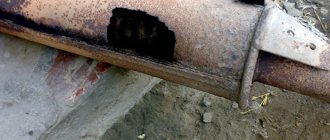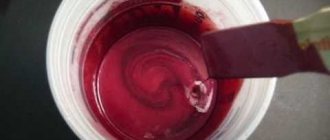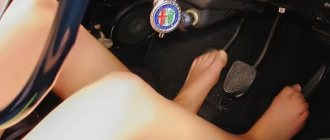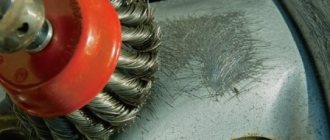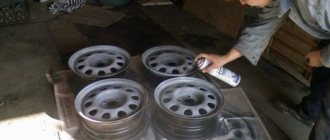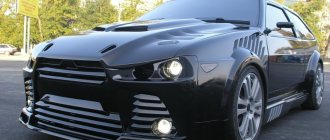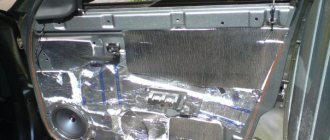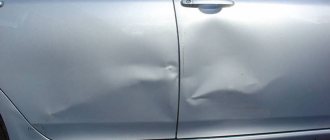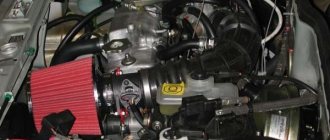The muffler is an important part of the vehicle exhaust system. It is designed to silently remove exhaust gases from the combustion chamber and ensure correct engine operation. Elements of the exhaust system must withstand large temperature changes, because during operation they heat up to several hundred degrees in seconds. The exhaust assembly is located under the car and is constantly exposed to moisture. Water and dampness have a negative effect on metal and cause rust. If the muffler is not protected from factors that destroy the metal coating, it will quickly wear out. The service life of the part is significantly reduced. The necessary measures to protect the integrity of the exhaust manifold were not taken in a timely manner? The unit will need repair or replacement soon. There are several ways to extend the life of a part. One of them is to coat it with a special anti-corrosion compound. Don’t know what to paint your car muffler to prevent it from rusting? Take advice from experts.
Protect your car muffler from corrosion
To increase the service life of the exhaust pipe, car enthusiasts use two main methods:
- Drilling a hole in a pipe to allow condensate to drain out.
- Application of heat-resistant paint.
The first method allows condensation to escape, thereby preventing the accumulation of liquid and the formation of rust. Despite its effectiveness, not all motorists are ready for such radical interventions.
So, painting a car muffler with special paint to prevent it from rusting is often the only way to combat corrosion. This protects against rust and prevents accelerated aging of the metal from high temperatures. The best option is to paint the calipers with silver enamel: this is a reliable method, moreover, it is pleasant and affordable.
The final stage of how to paint a car body in the garage with your own hands
How to paint stamped car rims with your own hands If you are already familiar with the process of polishing a car body, then you know how important the end result is, because only it can bring positive emotions. In order for painting work to be carried out at a high level, it is necessary to select the correct spray gun nozzle, as well as the paint composition.
Preparing the paint
Automotive paints must meet the viscosity of 15-20 seconds. This parameter is measured with the simplest capillary viscometer, the cost of which is in the range of 300-600 rubles. The procedure is simple and is performed according to the following scheme:
- Close the outlet of the funnel with your finger and fill it with paint.
- At the same time, open the hole and start the stopwatch.
- Record the time it takes for all the paint to flow into the hole.
All measurements are made at a temperature of 20-22°C. Optimal viscosity values are indicated on the packaging. In the absence of a viscometer, the viscosity can be checked visually - the paint should flow from the rod at a speed of 3-4 drops per second.
Setting up the spray gun
Now we know how and with what to remove rust from a car and paint the body with primer. All that remains is to adjust the spray gun. When the paint viscosity is 20-22 seconds, install a 1.4-1.5 mm nozzle; at 30-35 seconds, a 1.6-1.8 mm nozzle is suitable.
When setting, the size of the surface to be painted is also taken into account. For example, to paint the pillars, you need to adjust the spray gun so that it produces a narrow stream of paint, and for the hood - a wide one. The air pressure is set within 2.5-3 Atm.
Car body painting process
The spray gun should be held at a level of 18-20 cm from the surface being treated. The equipment is directed perpendicular to the body, and the paint is applied in even stripes, overlapping 1/2 of the previous strip.
Experts determine another important parameter - the speed of movement of the hand with the spray gun; it should be 45-50 cm/s. In other words, one pass with the tool from one edge of the area to be painted to the other should take approximately 2 seconds. Naturally, this indicator is a recommendation; the main criterion is the thickness of the layer. Therefore, before you paint the car body with your own hands, it is recommended to test the process on some unnecessary surface.
The process starts from the highest point with a sequential transition to the lower sections. On average, three layers are applied, each of which should dry within 30-40 minutes. The final drying time is 25-30 hours at a temperature of at least 20°C. Next, all that remains is to remove the tape and paper that covered individual elements of the car from the paint, and polish it with polishing paste.
Is it allowed to paint the muffler on a car?
Whether to paint the exhaust pipe is up to you. The factory paint, which is mainly responsible for its presentable appearance, begins to lose its integrity soon after purchasing the car. In addition, scratches are possible already during installation, and welding work reduces the protective characteristics of the top layer.
Rusty car muffler
Although it is not covered with anything on the inside, when properly applied to protect the car muffler from corrosion on the outside, the paint still protects for some time, significantly extending the life of the part.
Treating the muffler before installation (how to treat it?)
Batterykin
ten70
Oracle
Thank you all so much for your advice!
andrei78, please tell me how to process it correctly.
My boyfriend, I apologize for the stupid question, but what is “working out”?
Batterykin
Thank you all so much for your advice!
andrei78, please tell me how to process it correctly.
My boyfriend, I apologize for the stupid question, but what is “working out”?
Thank you all so much for your advice!
andrei78, please tell me how to process it correctly.
My boyfriend, I apologize for the stupid question, but what is “working out”?
Thank you all very much for your advice. I'll probably still paint it with high-temperature paint.
2 NikolayR.: we’ll take it into account!
ten70
Oracle
You will never get rid of water in the plug; during its cooling, air seems to be sucked into the plug, and there is a lot of water vapor in it. This is confirmed by the fact that the last can rusts faster. The best way to get rid of water in the plug is to rev it up with the engine running.
Well, pouring in all sorts of waste is unnecessary, I think painting the outside is sufficient, the main thing is to paint all the welds properly.
dantek
Rrrrrrrr.
Just yesterday I went to a muffler repair shop to tighten the clamp.
As a result, the diagnosis was that the ENTIRE graduation was subject to replacement.
The middle part - BOSAL did not even pass 10 thousand. The weld seam is frayed. And the Glushak looks like new
The rear of the Walker is garbage, but the mileage is about 35 thousand. It also looks rotten and has no holes.
And you say - processing, processing.
What to do and I don’t know!?
After this, you don’t even want to buy a new one. But welding this money costs a lot and without a guarantee.
Just yesterday I went to a muffler repair shop to tighten the clamp.
As a result, the diagnosis was that the ENTIRE graduation was subject to replacement.
The middle part - BOSAL did not even pass 10 thousand. The weld seam is frayed. And the Glushak looks like new
The rear of the Walker is garbage, but the mileage is about 35 thousand. It also looks rotten and has no holes.
And you say - processing, processing.
What to do and I don’t know!?
After this, you don’t even want to buy a new one. But welding this money costs a lot and without a guarantee.
so did you have a new bozal or something? galvanized? Didn't you treat it before installing it? If it’s new, where and how much did you get it?
if welding is expensive, replace it with a new one. It cost me: back part $40 + middle part $36 = $76 (existent) - not that expensive. I can probably change it myself.
Source
Selection of paint for a car muffler
Choose paint for the muffler based on the following basic parameters:
- Heat resistance (the higher the better: the exhaust pipe can heat up to 600 degrees, so its temperature range should be from -35 to 600 degrees Celsius).
- Anti-corrosion.
- Waterproof.
- Painting characteristics: structural uniformity, color saturation, drying speed.
It is best to buy silicone enamel or heat-resistant varnish.
Heat resistant
Silicone heat-resistant paints are popular among car enthusiasts because they are easy to use (applied in several layers and do not require a primer).
Painting a car muffler with a heat-resistant compound not only protects against rust, mechanical damage and chemicals, but also extends the life of the exhaust pipe, making it resistant to high temperatures.
Heat resistant paint for muffler
There is an important point that distinguishes heat-resistant paint for the muffler: in order for it to harden, the composition must be heated to 160–200 degrees. This can be done using a hair dryer or high temperature oven. The drying period for each layer is 15–20 minutes.
Fireproof
Painting a car muffler with fire-resistant powder paints, as a rule, takes place in an industrial environment. The composition, in comparison with silicone heat-resistant analogues, makes it possible to withstand higher temperatures. The main disadvantage is the difficulty of application.
Serebryanka
The best paint for a car muffler is silver. At service stations, it is most often made silver or black: these shades can withstand temperatures of up to 600 degrees in the short term, and up to 400 degrees in the long term. Other colors are less heat resistant.
The muffler is painted with heat-resistant varnish
The muffler is painted with heat-resistant varnish
In general, I bought gas-69 not so long ago.
He is many years old. Accordingly, there is a little rust, although the condition is excellent for its age. Question 1: Rust has grown, how to get rid of it and how to prevent it from growing again? Paint it and that's it? Question 2: I’ll remove rust on the plug, but how can I prevent it later? Do you need to cover it with something? Paint with something heat resistant. loose rust necessarily requires stripping down to metal or stable rye, after which pickling with a converter, preferably one with zinc, then thorough repeated washing with water, drying, primer with a converter, then painting. When you treat a rye stain, expose the paint to an area one and a half times larger, usually this is the amount already affected by the rye along the perimeter. but she will still appear in this place, the question is how long you can delay this process..
The Glushak is rusting while the muffin is standing still without work, clean it with a metal brush and continue driving, it will burn and everything will be as it should. When it completely rots, you put in another plug. Painting an already rusty muffler is a no-brainer.
In general, I bought gas-69 not so long ago. He is many years old. Accordingly, there is a little rust, although the condition is excellent for its age. Question 1: Rust has grown, how to get rid of it and how to prevent it from growing again? Paint it and that's it? Question 2: I’ll remove rust on the plug, but how can I prevent it later? Do you need to cover it with something? Paint with something heat resistant.
The easiest way to deal with rust on a Glushak is to actually fight the Glushak itself. For the third time, my Glushak looked like this, it went off with a bang ;): https://www.a-stone.ru/other/glushak.jpg
I don’t know how the Glushak survives until it rusts :)))))
In general, I bought gas-69 not so long ago. He is many years old. Accordingly, there is a little rust, although the condition is excellent for its age. Question 1: Rust has grown, how to get rid of it and how to prevent it from growing again? Paint it and that's it? Question 2: I’ll remove rust on the plug, but how can I prevent it later? Do you need to cover it with something? Paint with something heat resistant.
You can extend the life of the muffler by covering it with heat-resistant paint. But not for long, because... As a result of temperature changes, the paint will fly off, as well as exposure to dirt, water, etc.
Painting a Glushak is something of a joke.
The army also paints grass noona;)
And the rust is very much from experience. It’s difficult to do well - after every winter (when parking on the street in Moscow) new old spots begin to come out.
Painting a Glushak is something of a joke.
The army also paints grass noona;)
And the rust is very much from experience. It’s difficult to do well - after every winter (when parking on the street in Moscow) new old spots begin to come out. Not really funny, the mufflers on foreign cars are painted. In the Southern Port they sell special heat-resistant paint. I buy it regularly (for work, not for muffler). But for UAZ, I agree, it’s useless. This is the second time that my muffler lasts for one year. Just replaced another one yesterday. Due to sloppy welding, the internal partition comes off, the muffler turns into a direct-flow muffler, and the outside is still almost like new. PS But actually, just for fun, you can paint it.
. PS But actually, just for fun, you can paint it. well, yes, in bloody color;)
If you drive decently, then there’s no point in painting it, but if it’s 4 hours a week, it won’t have time to burn in the parking lot!
Club of fans of minibuses and minivans
Conventional anti-corrosion paints and varnishes can protect the metal only during storage and transportation, and, as a rule, after installing the units on the car, when leaving the assembly line of the car plant, they burn during running-in.
From the outside (the exhaust system is mounted under the bottom of the body), a lot of dirt and water gets on the muffler metal, including hot metal, but here the main influence is not corrosion (water quickly evaporates due to temperature), but thermal shocks, which gradually weaken the metal.
From the inside, the muffler is exposed to a hot flow of exhaust gases, which in itself causes aging and erosion of the metal. In addition, when idling and warming up the engine, the gases in the pipes have time to cool below the dew point, which leads to condensation in the muffler (if the trips are short, it can be there constantly), and, accordingly, corrosion from the inside. These unfavorable factors determine the relatively short service life of the exhaust system in cars.
Requirements for the coloring composition
To paint the exhaust system of a car, choose a thermal paint that has the following characteristics:
- purpose: for painting the exhaust system and muffler (external side);
- heat-resistant (applied to a surface that is subject to constant or periodic heating);
- can be applied using a roller, brush, spray gun, or special electrostatic sprayer;
- the applied layer of paint hardens only under the influence of high temperatures;
- after hardening, the coating becomes resistant to water, corrosion, and high temperatures;
- additionally protects the system from fire;
- It has a long period of protection and decorative properties.
Winding means
Due to the high heating temperature of the car muffler, the exhaust pipe often burns out. You can repair a part without welding or add thermal insulation using various winding means:
- A car muffler bandage will help seal a burnt hole in the exhaust pipe without welding. To do this, remove the part from the machine, degrease it, and wrap the damaged area with a regular medical bandage, well soaked in stationery (silicate) glue.
- High-temperature bandage tape for a car muffler is an elastic strip of fiberglass or aluminum 5 cm wide and about 1 meter long, onto which an adhesive base is applied (most often epoxy resin or sodium silicate). The use of tape replaces repairs in a car repair shop. With its help, you can repair burnt holes and cracks, and strengthen parts damaged by corrosion. Or simply wrap the exhaust pipe to protect it from possible damage.
- Heat-resistant adhesive tape for a car muffler is made from aluminum foil or Kapton (exclusively developed by DuPont).
- The best option for thermal insulation of the exhaust system is thermal tape.
If the muffler is burnt out, and there is no time to dismantle and wrap it, you can temporarily repair the damage to the exhaust system using a heat-resistant sealant. It can withstand heating up to 700-1000 degrees, depending on the composition and manufacturer.
Ceramic sealant, after hardening, “turns to stone” and can crack due to vibration of the exhaust system; for repairs it is better to take a more elastic material based on silicone.
Properties and characteristics
Thermal tape for a car is a strip of fabric that is resistant to high temperatures (it can heat up to 800-1100 degrees without being damaged). The heat resistance and strength of the material is given by the weaving of silica threads or the addition of sprayed lava.
Type of thermal tape
The tapes are produced in various widths, the optimal size for high-quality winding is 5 cm. One roll 10 m long is enough to cover the muffler of most cars. The material can be black, silver or gold - the color does not affect performance and is selected based on its decorative function.
Advantages
If the winding technology is followed, the thermal tape “fits” better and is more securely attached to the surface of the pipe than bandage tape or heat-resistant tape. Also, when using it, the temperature of the car muffler is more stable.
Flaws
Using thermal tape also has its disadvantages:
- Because a car's muffler heats up to about 300 degrees and the tape maintains excess heat, the exhaust system can quickly burn out.
- If the tape is not wound tightly, liquid will accumulate between the winding and the surface of the pipe, accelerating the appearance of rust.
- Due to the fact that the temperature of the car muffler after wrapping will be higher, as well as from exposure to road dirt or salts, the tape will quickly lose its original color and appearance.
The more carefully the thermal tape was wound and secured, the later it will become unusable.
Painting the muffler extends the service life of the part
Confidence on the road depends on many factors. One of them is the condition of the exhaust manifold. A serviceable part ensures quiet, comfortable movement on the road.
The “growling” sound is perceived ambiguously by other road users and attracts the attention of traffic police officers. Do you want to drive safely and comfortably? Choose the “right” paint for the exhaust manifold
Read further:
Properties of heat-resistant paint: advantages and scope, types of compositions and coating technology
How to paint a metal stove in a bathhouse?
Do-it-yourself technology for painting chimneys: choosing paint and step-by-step instructions for painting from different materials
Choosing paint in a spray can for painting a car: main problems and methods for choosing the composition
Painting a refrigerator: choice of paintwork materials, technology features, tips
Pay attention to: How to properly paint a car body using a roller: step-by-step painting instructions
Alkyd heat-resistant coating
Alkyd heat-resistant enamels can withstand heating temperatures up to 150 degrees. Based on this, they can be used for exterior finishing of stoves in places where there is no risk of fire, or indoors for painting radiators.
It is important to consider that alkyd compounds have a pungent, unpleasant odor, so they must be applied to a cooled surface. Among the advantages of this type of thermal coating:
- Can be used on any surface, high level of adhesion;
- service life up to 10 years;
- protection of the surface from external influences.
The alkyd composition should be applied to the surface in two layers so that the color is more uniform. It is convenient to use a brush to work with it, but some manufacturers produce an alkyd aerosol. Although it can be used to quickly paint hard-to-reach places, the material consumption in this case increases significantly.
Preparing for the painting process
During preparatory work, special attention should be paid to cleaning the paint from old enamel. Neglecting advice may result in poor quality painting. It is especially important to completely remove all traces of corrosion and rust.
There are several options for removing such plaques:
- You can use a very stiff brush with high-quality wire bristles to clean the surface. If there is an area of pinpoint damage from destructive corrosion on the surface, it is worth treating it with epoxy putty;
- A conventional scraper can provide relatively good results. This device is used in the process of preparing various parts for the painting process. If you are processing a relief surface, you should use special shaped scrapers. To significantly speed up the process, it is recommended to use a special grinding machine;
- If it is necessary to remove a layer of old paint from the muffler, effective chemical removers can be used. They are ideal for cleaning surfaces from various water-borne paints, as well as organic compounds;
An ordinary heat gun is perfect for high-quality cleaning of a car muffler, but it must be used very carefully. As soon as the paint swells and peels, it must be carefully removed.
This method is not suitable for parts that are made from materials that contain large amounts of lead, since during the heating process the latter can begin to evaporate quickly, which is very dangerous for the health of the person who is carrying out the painting process.
Where does corrosion occur?
Intensive corrosion of the car body begins from below. Rust prefers to appear on parts of the body exposed to paint, in areas that most often come into contact with moisture. These are the bottom, spoilers, wings, etc. Risk areas are considered to be
- Places where the body borders the lights and radiator grille.
- Hood and trunk roof (door);
- Attachment points for handles and locks;
- Bottom edge of the door;
- welding places.
The underbody of the car, which bears the maximum load, requires close attention. All power units are concentrated under it, and therefore the bottom experiences the aggression of chemical agents and temperature changes. Outside - impacts from pebbles and crushed stone, ice build-ups in winter, tall grass or tough low bushes in summer - these factors tear off the protective layer of anti-corrosion, exposing the metal of the bottom to the destructive effects of moisture and dirt. Anti-icing chemicals containing salts and acids pose an increased danger to vehicles. To protect your car from rust, you need to eliminate the causes of metal corrosion.
Destructive factors
Let's briefly look at the main factors that destroy the exhaust system.
- Heat. At the base of the exhaust manifold, the metal line temperature often exceeds 400 °C. This accelerates corrosion processes and weakens the metal.
- Vibration. Dynamic alternating loads lead to the accumulation of microdamages in the metal structure, which subsequently develop into cracks.
- Exposure to external and internal aggressive environments. Outside, the exhaust line is negatively affected by water, abrasives and chemicals that are sprinkled on roads in winter. From the inside, the muffler metal is destroyed by active compounds contained in the exhaust. This factor is considered the most destructive.
To protect the muffler from corrosion processes, special paints are used.
Types of heat-resistant coatings
The most popular are high-temperature finishing materials in the following forms of release:
- heat-resistant enamel in a jar or bucket;
- heat-resistant spray paint in cans.
One form or another should be used depending on the location of treatment and personal preference. It is convenient to apply the enamel with a roller over a large area, and aerosol paint will help you reach corners and hard-to-reach places.
Manufacturers produce heat-resistant paint on different bases. They differ in their basic properties, scope, ease of application and safety. On store shelves you can find the following coatings:
- acrylic;
- alkyd;
- epoxy;
- silicone.
Oil-based paints should not be applied to a surface that is heated, since when exposed to high temperatures they release harmful volatile substances with a characteristic unpleasant odor.
Properties of heat-resistant paints
Restoring a car steering wheel: how to paint the steering wheel and how to paint it yourself
Heat-resistant paint, due to its composition, has a number of properties that can extend the life of equipment and products. These include:
- ability to withstand high temperatures and extremes;
- thanks to composites and resins, the paint composition under the influence of temperatures turns into a polymer and becomes inert (does not emit substances harmful to human health);
- enamels lay well and easily on the surface when painting and adhere to it;
- the coating is quite durable, easy to wash and clean;
- paints protect metal products and equipment from corrosion;
- when the temperature changes, the paints do not crack, that is, they are quite plastic;
- polymer compounds create additional electrical insulation.
